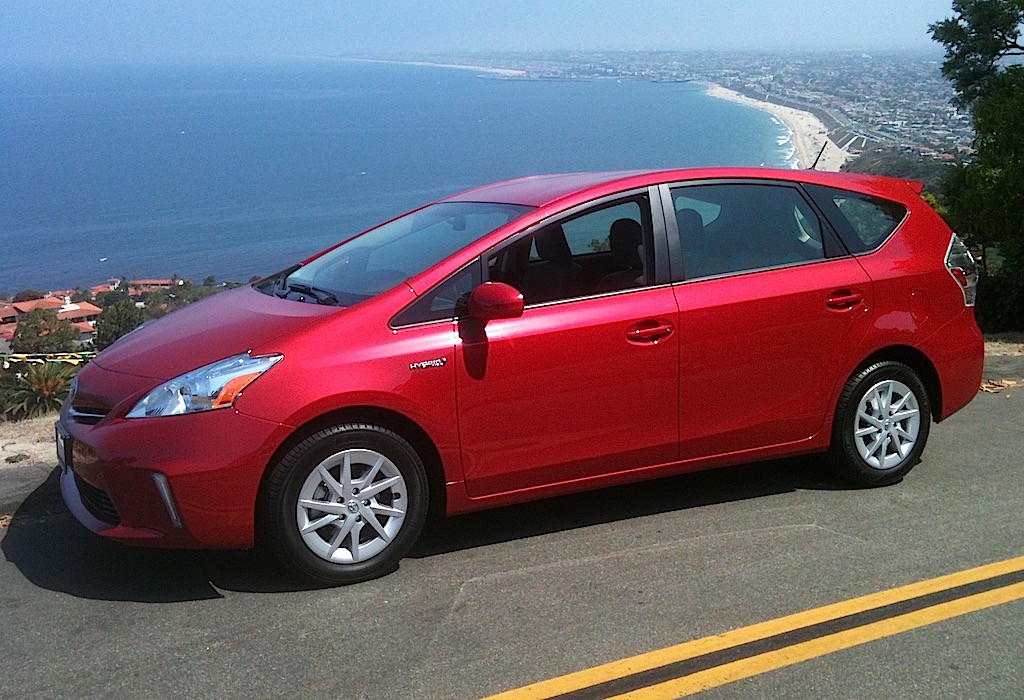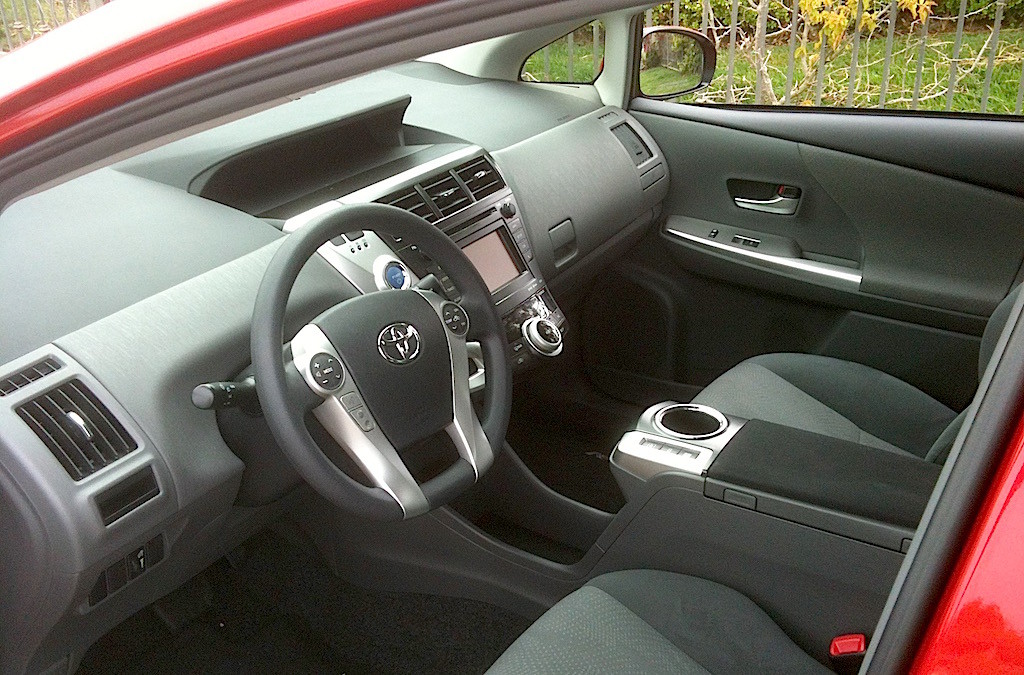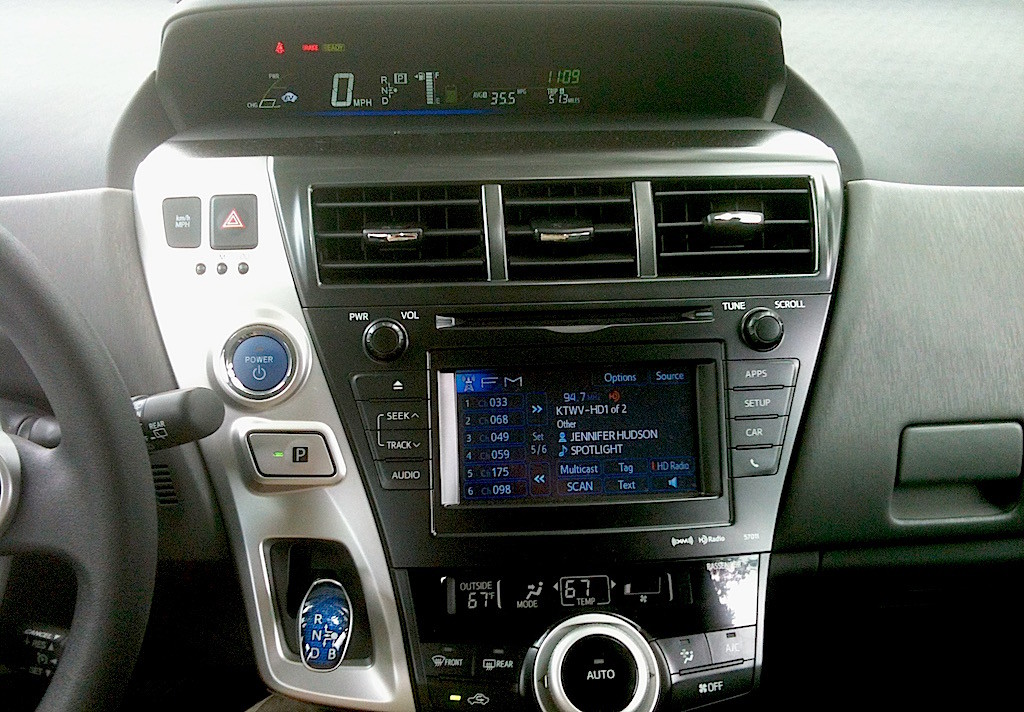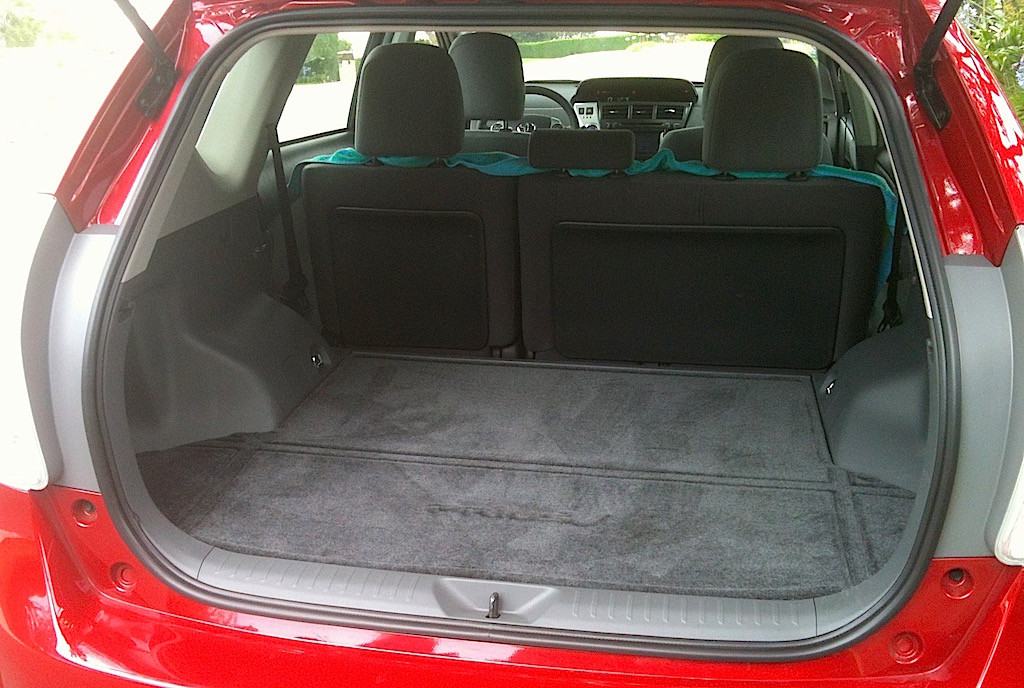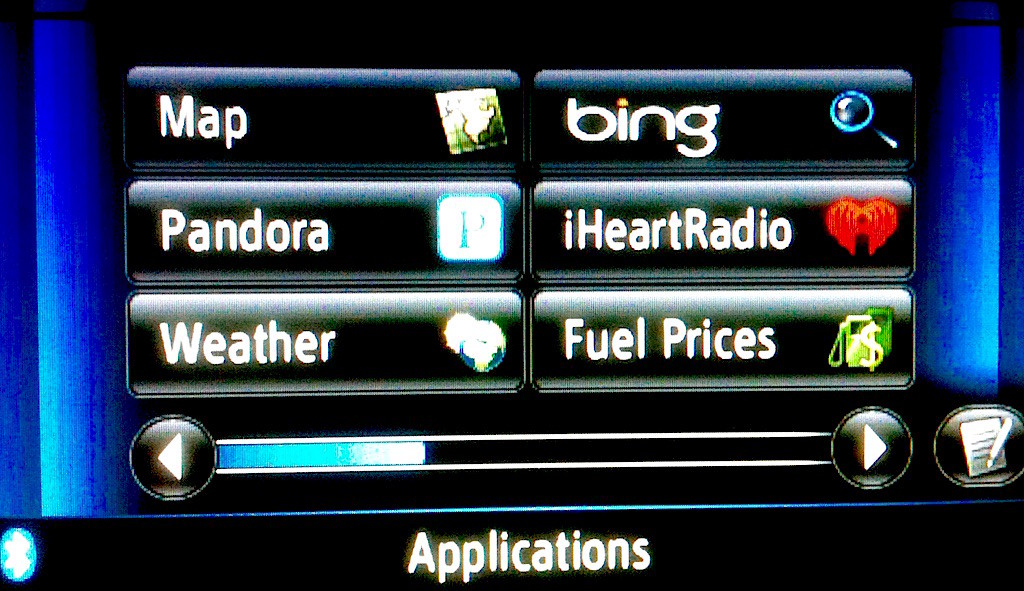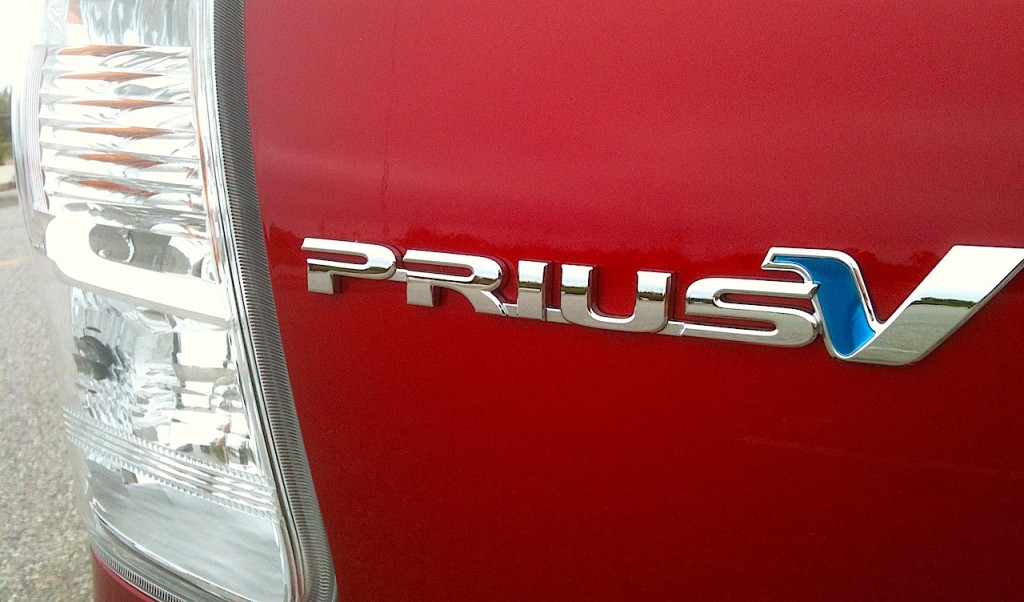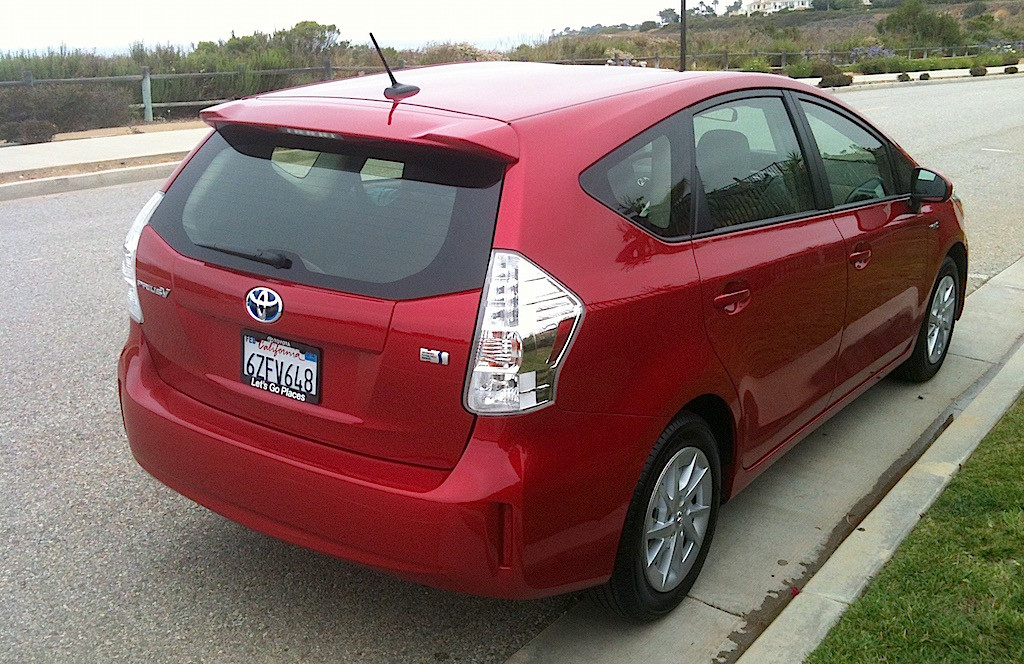By Steve & Tamami Laser
Way back in 2000, Toyota let us drive the first-generation Prius before it went on sale. The car stood out with futuristic styling and a unique interior with centrally mounted instrument cluster. As a full hybrid, it could operate in gasoline or electric power mode, or both. It sipped fuel and attracted lots of attention.
Thirteen years and more than a million sales later, Toyota continues to improve the world’s best-selling hybrid. Today, there’s a Prius family with a trio of body styles. The third-generation Prius hatchback offers regular and new plug-in models. There’s the smaller Prius c “compact.” And for those who need extra cargo space Toyota now offers the Prius v, which stands for “versatile.”
Toyota’s Hybrid Synergy Drive system combines a 98-horsepower 1.8-liter 4-cylinder-gas engine with two electric motors and a Ni-MH battery pack.
Since the v is 230 pounds heavier, has a larger front area and a different final drive ratio, fuel economy estimates are a bit lower with 44/40/42 mpg (city/highway/combined) compared to the Prius hatchback’s 51/48/50.
We drove our tester, the mid-range Prius v Three, a total of 222 miles, filled up the tank with 5.7 gallons and scored 38.9 mpg for the week-long test.
We frequently selected the “Power” mode to improve performance. The default “Eco” mode is designed to provide the best economy by managing throttle input. While the “EV” mode allows the car to go short distances at low speed on battery power alone.
Those who have driven a Prius will be right at home in the new v. The gear selector for the Continuously Variable Transmission is a by-wire joystick that sprouts from the dash. Brake pedal feel is different from a non-hybrid since normally wasted energy during braking is regenerated to charge the batteries.
Toyota added a new feature called “Pitch and Bounce Control.” This uses the torque of the hybrid motor to enhance ride comfort and control, suppressing bounce and toss motions.
Another thing that takes a bit of adjustment time in the Prius is the instrument panel. Nearly every display, control, switch and button is in the center. Of course, there are redundant switches on the steering wheel for many functions.
The v is five inches longer, four inches taller and an inch wider than the Prius. The regular Prius offers 21.6 cubic feet of cargo space versus 34.3 for the v. With the rear seat folded down, the v rivals some SUVs with 67.3 cu. ft.
The split rear seat folds, slides and reclines. And the front passenger seatback folds down so extra-long objects can be transported. The tailgate swings up to reveal a flat cargo floor.
With a base price of $27,415, the Prius v Three comes well equipped with automatic climate control, Toyota’s Display Audio with Navigation, Entune, a 6.1-inch touch-screen display, Bluetooth, SiriusXM Satellite Radio, HD Radio with iTunes Tagging and a smart key with push-button start.
Toyota’s Entune multimedia system provides support for mobile smartphone apps such as Bing, OpenTable and movietickets.com along with accessing travel-related services, such as live weather, traffic, fuel information, stocks and sports. Toyota says it brings the largest selection of music options available to a car including iheartradio’s 750 stations and Pandora’s music service.
The base Prius v Two has a few less bells and whistles for a starting price of $26,650. The Five model adds SofTex-trimmed seats, LED headlights, fog lights, 17-inch alloys and HomeLink. Toyota says the new SofTex material is designed for easy cleaning. Compared to leather and leatherette-type materials, SofTex weighs less, is manufactured with approximately 99 percent fewer volatile organic compounds (VOCs) than conventional synthetic leather, and doesn’t include any animal-based material.
If we were in the market for a hybrid, the Prius v would be a top choice. It offers everything we like about the regular Prius plus more room for our friends, dogs and bulky cargo that we always seem to be transporting. While it doesn’t equal the fuel economy of the regular Prius, the v is a much more practical and economical alternative to the likes of a traditional minivan or larger SUV.
Toyota Prius v Press Fleet vehicle provided by Toyota Motor Sales. (Prices and vehicle information applies to models sold in the U.S. at the time of publication. All information including prices, features and specifications is subject to change without notice by the automaker.)
Story and photos ©2013 CarNichiWa.com
